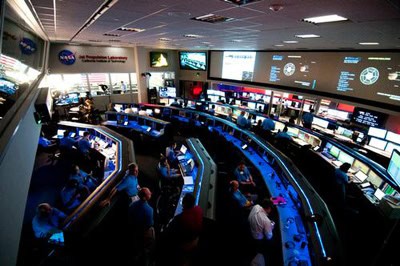
Barely nine months after the last cut, NASA’s Jet Propulsion Laboratory will again reduce its workforce. On Wednesday, the lab will lay 325 employees off, representing about 5 percent of the workforce at the California-based laboratory that leads the development of robotic space probes for NASA.
“This is a message I had hoped not to have to write,” JPL Director Laurie Leshin said in a memo to staff members on Tuesday morning, local time. “Despite this being incredibly difficult for our community, this number is lower than projected a few months ago thanks in part to the hard work of so many people across JPL.”
The cuts this week follow a reduction of 530 employees in February of this year due to various factors, including a pause in funding for the Mars Sample Return mission. The NASA laboratory has now cut about one-eighth of its workforce this year.
Dealing with budget challenges
In her staff memo, Leshin said the lab’s leadership has had to deal with “continued funding challenges” and an uncertain outlook as NASA considers its priorities for deep space exploration, and the role that JPL will play. After reviewing the latest projections, Leshin said it was inescapable that JPL would have to make a second cut this year. Accounting for the latest layoffs, the lab will be left with about 5,500 regular employees.
“While we can never be 100 percent certain of the future budget, we will be well positioned for the work ahead,” Leshin wrote. “This may not help much in this difficult moment, but I do want to be crystal clear with my thoughts and perspective. If we hold strong together, we will come through this, just as we have done during other turbulent times in JPL’s nearly 90-year history.”
Employees of the lab were told to work from home on Wednesday and that they would be notified by email as to whether their position would be affected.
“This reduction is spread across essentially all areas of the Lab including our technical, project, business, and support areas,” Leshin wrote. “We have taken seriously the need to re-size our workforce, whether direct-funded (project) or funded on overhead (burden). With lower budgets and based on the forecasted work ahead, we had to tighten our belts across the board, and you will see that reflected in the layoff impacts.”
This year’s employee cuts came after NASA decided to consider alternatives to a multibillion-dollar plan to return samples from Mars to Earth, which had been led by JPL. In September 2023 an independent review team found that the JPL plan was unworkable and would cost $8 billion to $11 billion to be successful.
A changing environment
While NASA considers alternatives from other field centers, as well as private companies such as SpaceX and Rocket Lab, the budget for Mars Sample Return was slashed from nearly $1 billion for this fiscal year to less than $300 million. Additionally, there is no guarantee that JPL will be given leadership of a revamped Mars Sample Return mission.
The staffing cuts reflect the fact that after the recent launch of the $5 billion Europa Clipper mission, JPL is not managing another flagship deep-space mission at present. Another sizable mission, the NASA-ISRO Synthetic Aperture Radar, is almost ready for a launch next year from India. The California laboratory has smaller projects, but nothing on the order of a flagship mission to command a large budget and support a very large staff.
JPL has a long and storied history, including the management of most of NASA’s highest-profile planetary probes, including the Voyagers, Mars landers, and Galileo and Cassini spacecraft. However in recent years other spaceflight centers, such as Johns Hopkins Applied Physics Laboratory, and private companies such as Lockheed have competed for projects and delivered results.
The job of Leshin and others at NASA is to ensure that JPL has a bright future in a changing world of planetary exploration. This week’s cuts will ensure such a future, Leshin wrote, adding: “We are an incredibly strong organization—our dazzling history, current achievements, and relentless commitment to exploration and discovery position us well for the future.”





























